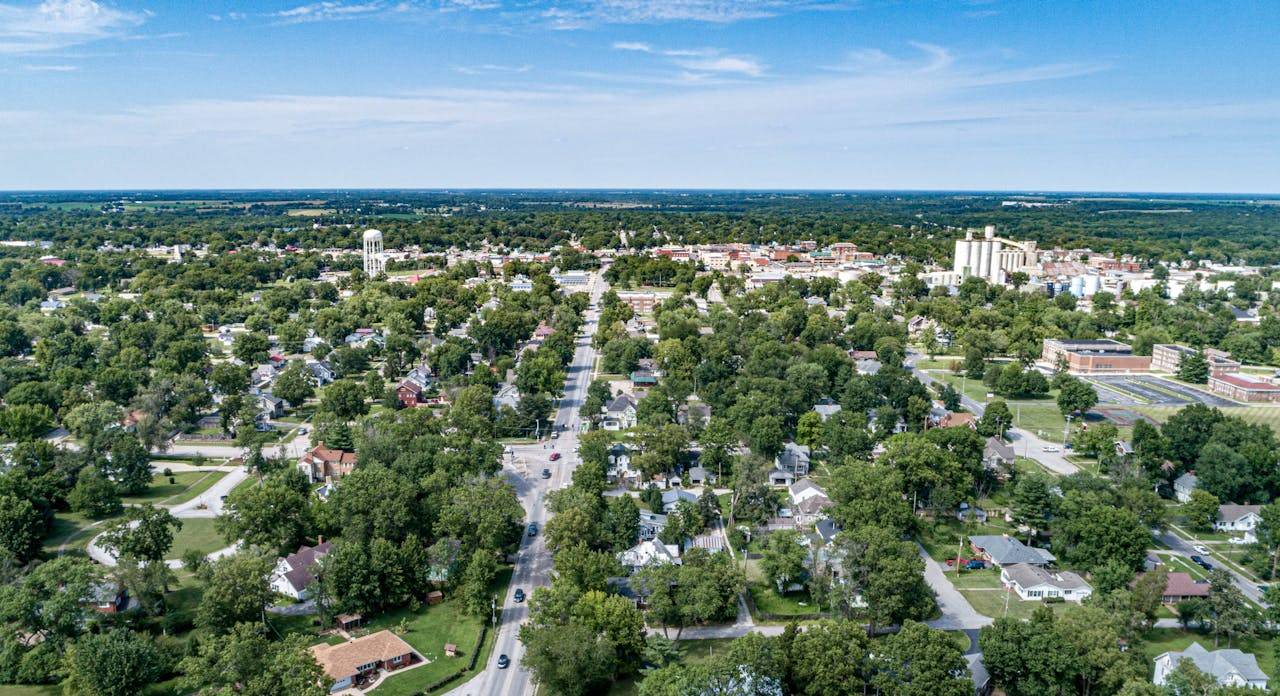The Uttar Pradesh Housing and Urban Planning Department has released the draft of the Uttar Pradesh Building Construction and Development Bylaws 2025, proposing several structural changes aimed at redefining urban planning across the state. Among the most significant proposals are the introduction of “Bazaar Streets” and an emphasis on Transit-Oriented Development (TOD) zones. The draft has been made available for public feedback and is expected to replace the currently applicable 2008 bylaws.
The draft has consolidated all amendments and notifications issued since the 2008 regulations were implemented. It also seeks to address evolving urban challenges, offer updated planning tools for new and existing developments, and align the state’s urban growth with national policies related to housing, infrastructure, and transport.
Bazaar Streets: Commercial Use Within Residential Layouts
A key feature of the 2025 draft is the introduction of “Bazaar Streets.” These are designated roads within residential zones that allow mixed land use, primarily to accommodate commercial activity within a residential layout. According to the draft, any street with a minimum right-of-way (ROW) of 12 metres—or as specified in the relevant master plan—may be declared a Bazaar Street.
On these streets, commercial use is permitted up to the full depth of the plot, covering the ground and first floors. Residential activity is allowed on upper floors, and lower levels may also be used for housing upon request. The bylaws do not impose a fixed height restriction on buildings located on Bazaar Streets, though height limitations will still apply where mandated by separate regulations—for example, near protected monuments, heritage precincts, or airport flight paths.
This change reflects a departure from earlier norms. Previously, commercial use was typically restricted to specific roads with a minimum width of 12 metres or more. As per a former planner from the Ghaziabad Development Authority (GDA), quoted in the Hindustan Times, the proposed bylaws may now permit retail shops even on roads with widths as low as nine metres, and in existing dense areas, possibly even on six-metre-wide roads.
The intent is to formalise and regulate the mixed-use development patterns that already exist in many parts of the state’s urban areas. It is also expected to encourage redevelopment in older neighbourhoods where commercial activity has been informally integrated over time.
Transit-Oriented Development Zones and FAR Revisions
The 2025 draft also introduces planning norms for Transit-Oriented Development (TOD) zones. These zones are designated areas located within a 1.5-kilometre radius of major public transport infrastructure such as metro stations and Regional Rapid Transit System (RRTS) corridors.
In Ghaziabad, TOD zones have been identified in the GDA’s draft Master Plan 2031. These zones are aligned with the National TOD Policy, 2017 and updated state-level guidelines issued in 2022. Buildings in TOD zones will be permitted higher Floor Area Ratios (FAR) and more flexible land use. The aim is to enable compact, high-density developments that reduce reliance on private vehicles, improve access to mass transit, and support integrated neighbourhood development.
TOD principles support a mix of commercial, residential, and institutional uses. They are intended to encourage walking and cycling, reduce traffic congestion, and promote public transport as the primary mode of commuting.
Overhaul of Urban Development Norms
In addition to Bazaar Streets and TOD zones, the 2025 draft includes broader changes across multiple aspects of building and urban planning regulations. These include:
- Revised setbacks for buildings depending on road width and plot size
- Updated parking norms to reflect changes in vehicle ownership patterns and urban densities
- Modifications to green area requirements in residential layouts and plotted developments
- Revised fire safety and structural guidelines in line with national codes
- Simplified layout approval processes for group housing, plotted colonies, and commercial developments
- Provisions for rainwater harvesting, waste management, and energy-efficient construction
The draft brings together previously fragmented rules and aims to simplify compliance by providing clarity on development control parameters across various use categories—residential, commercial, institutional, and industrial.
The Housing and Urban Planning Department has invited suggestions and objections from stakeholders, including citizens, developers, planning professionals, and resident welfare associations. Comments must be submitted in writing to the department's office at Vibhuti Khand, Gomti Nagar, Lucknow, or via email at ctcpbuildingbyelaws2025@gmail.com. A 15-day window has been provided from the date of notification for submitting feedback. Officials have stated that the feedback received will be reviewed before finalising the new bylaws. The final version is expected to play a critical role in shaping development across cities and towns in Uttar Pradesh over the next decade.









